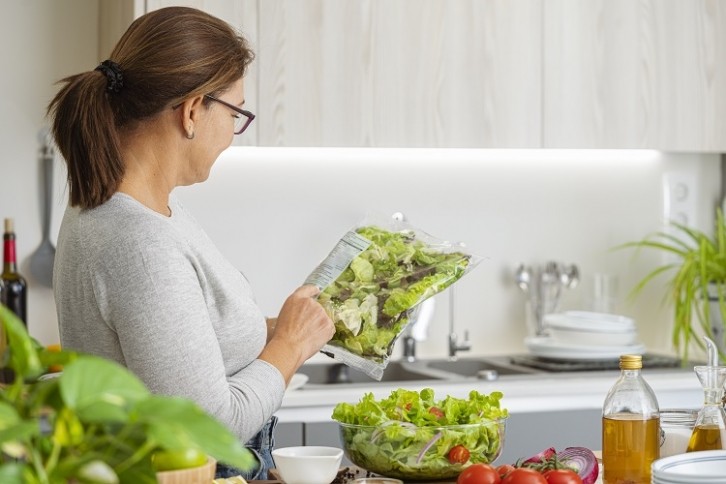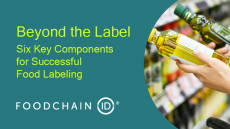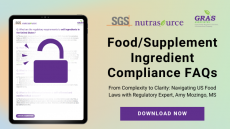Can front-of-pack labelling improve consumer perceptions of products in plastic packaging?

Plastic has a significantly negative reputation, arguably not without reason. According to the United Nations (UN), around 19-23 million tonnes of plastic waste leaks into aquatic ecosystems, which pollutes rivers, lakes and even seas with waste. It is well known to pollute some areas of human habitation, as well, such as the beaches of Senegal. It can be hazardous to animal as well as, in the form of microplastics, human health.
Thus, many consumers have a negative view of plastic. However, it is often highly important for the protection of food, and for providing longer shelf lives.
A recent study, published in the journal Food Quality and Preference, suggested that, in the case of healthy foods, consumer concern about the sustainability credentials of plastic, can be partially alleviated by the presence of front-of-pack labelling declaiming their healthiness.
What are front-of-pack labels?
Front-of-pack labelling, such as Nutri-Score, Keyhole and Italy’s NutrInform Battery, are prevalent across Europe. They aim to help give consumers a good idea of how nutritious a particular product is, without going to the trouble of spending hours researching it.
What is consumer perception of products contained in plastic?
To test the effect of plastic packaging on consumer perception, the researchers carried out an initial study. They presented participants with cereal, which according to the study is often perceived as healthy, contained in plastic packaging.
They asked them how they perceived the product within this packaging, as well as how ‘reliable’ they saw the packaging itself and whether they thought front-of-pack labelling had the potential to improve perceptions.
NutrInform Battery
Released in 2020, NutrInform Battery was adopted in Italy as a rival to Nutri-Score, popular in France, Spain, Belgium and the Netherlands. Italy adopted NutrInform due to its belief that Nutri-Score discriminated against traditional Italian cuisine.
The study found a strong negative perception of plastic, influenced by both its perceived negative effect on the environment and perceived negative effect on the product. However, the majority of respondents (87%) did suggest that front-of-pack labelling could improve such a perception.
From this initial stage of the research, the researchers hypothesised that the presence of a front-of-pack labelling on plastic packaging will improve consumer perceptions of said packaging.
Which front-of-pack labelling has better consumer perception?
In order to test which front-of-pack labelling had a better consumer perception – NutrInform Battery or Nutri-Score – the researchers created two fictitious salads in plastic bags to show participants. Some participants were shown those adorned with a Nutri-Score, and others with NutrInform Battery. Participants were asked to gauge their perceptions of the products’ quality, as well as their trust towards the material, and health concerns.
The study revealed that the NutrInform Battery positively affected how consumers perceived the packaging, compared with the Nutri-Score, both in terms of trust and food quality.
Which labelling is the healthiest?
Earlier this year, the Organisation for Economic Co-operation and Development (OECD) carried out research into which of Europe’s voluntary front-of-pack labelling schemes was the best at reducing non-communicable disease. What it found was that Nutri-Score showed the highest potential to reduce calorie count in shopping baskets, compared to rivals Keyhole, Nutri-Couleurs and Nutri-Repere.
Do front of pack labels help improve consumer perception of plastic packaging?
In the third study, the researchers built on the previous two. Participants were shown either a plastic bagged salad with no labelling, a plastic bagged salad with the NutrInform Battery and the ‘tidy man’ logo (a widely used logo that aims to present a message of environmental responsibility), or a plastic bagged salad with the NutrInform Battery, the tidy man logo, and the recycling logo.
Participants were then asked how they perceived the quality of the food, the sustainability of the product, and their trust in the packaging material used.
The packaging without any front-of-pack labelling was perceived as less sustainable than that containing the NutrInform Battery and tidy man logo, which in turn was seen as less sustainable than the packaging which also contained the recycling logo. This, the researchers suggest, means that ‘virtuous’ cues such as the recycling logo have a positive impact on consumer perceptions.
The packaging without any front-of-pack labelling was also seen as consisting of less trustworthy material. Front-of-pack labelling also increased consumer perceptions of the food quality.
Ways of reducing plastic
Because of plastic’s long life, often taking hundreds of years to degrade, many start-ups have taken to creating alternatives that can vanish without a trace. One start-up recently developed a bioplastic that can degrade at ambient temperatures, for example, while another has created a coating that can give paper packaging certain properties of plastic. Previous research has indicated that sustainable packaging can improve consumer attitudes and purchasing intentions.
Sourced From: Food Safety & Quality
'An investigation on the interplay between Front-of-Pack nutritional labels and plastic packaging materials in healthy foods'
Published on: 6 August 2024
Doi: https://doi.org/10.1016/j.foodqual.2024.105291
Authors: M. F. Mazzù, C. Donato, V. Marozzo


















